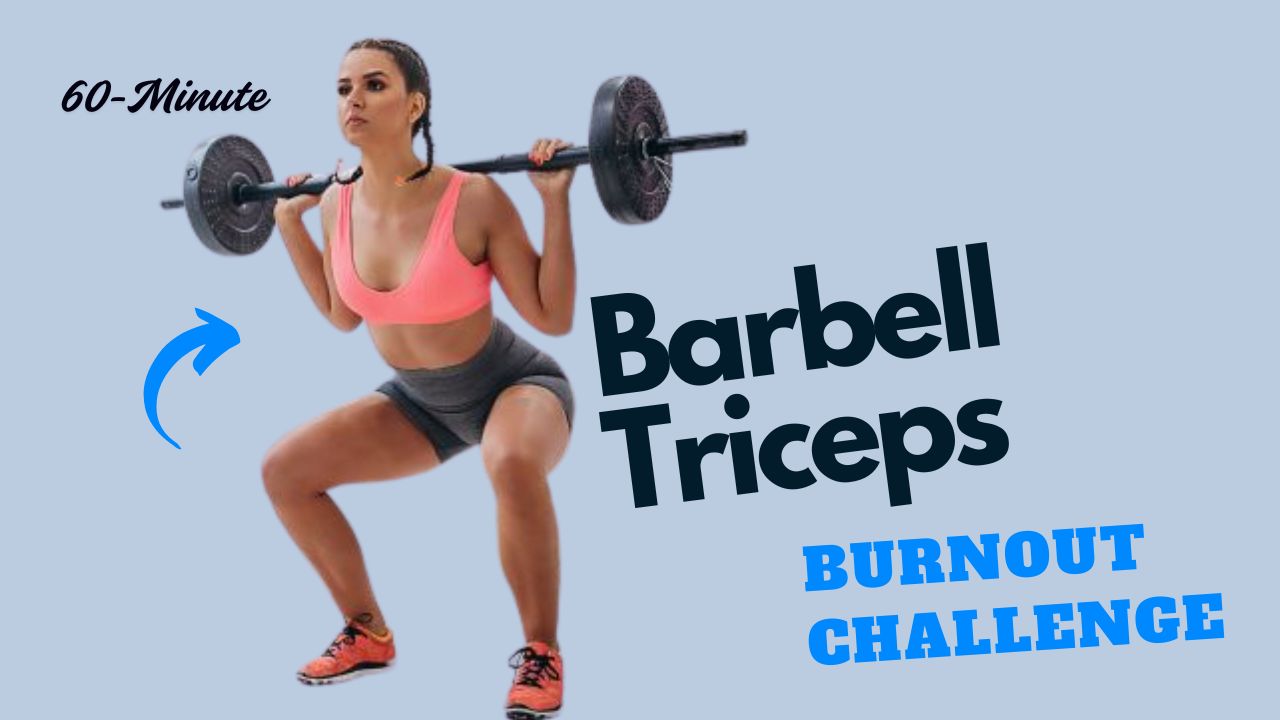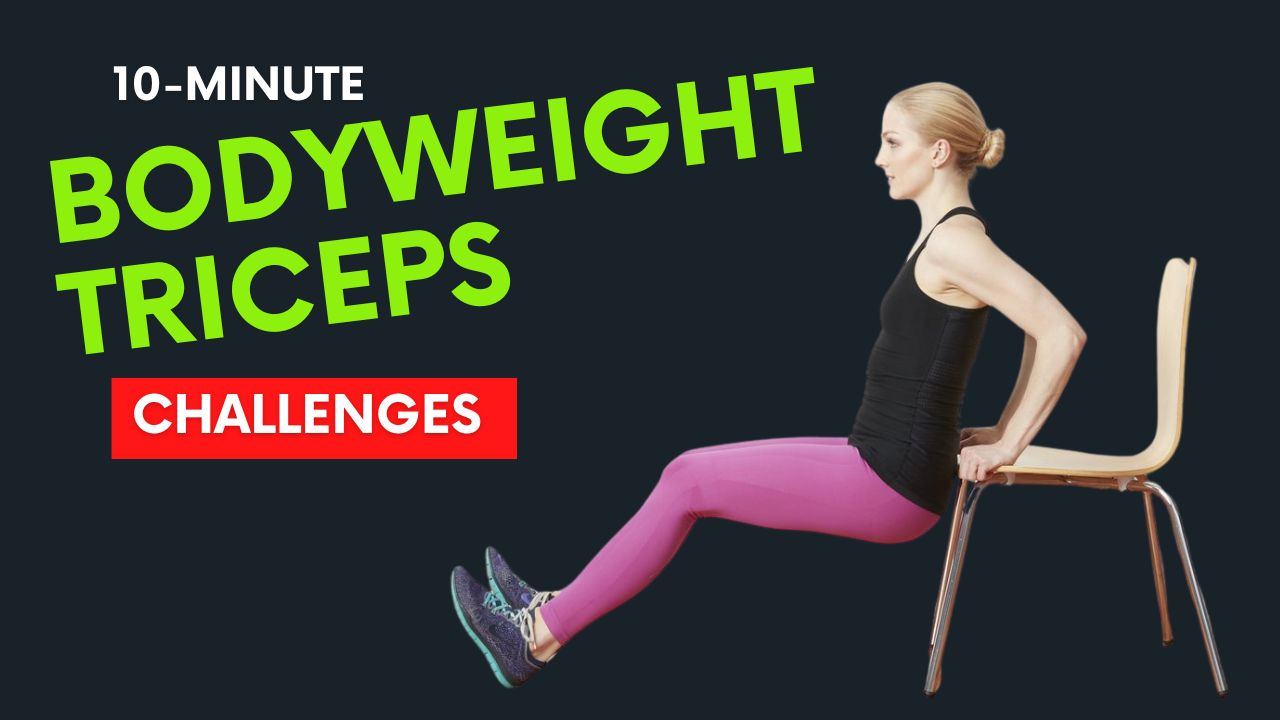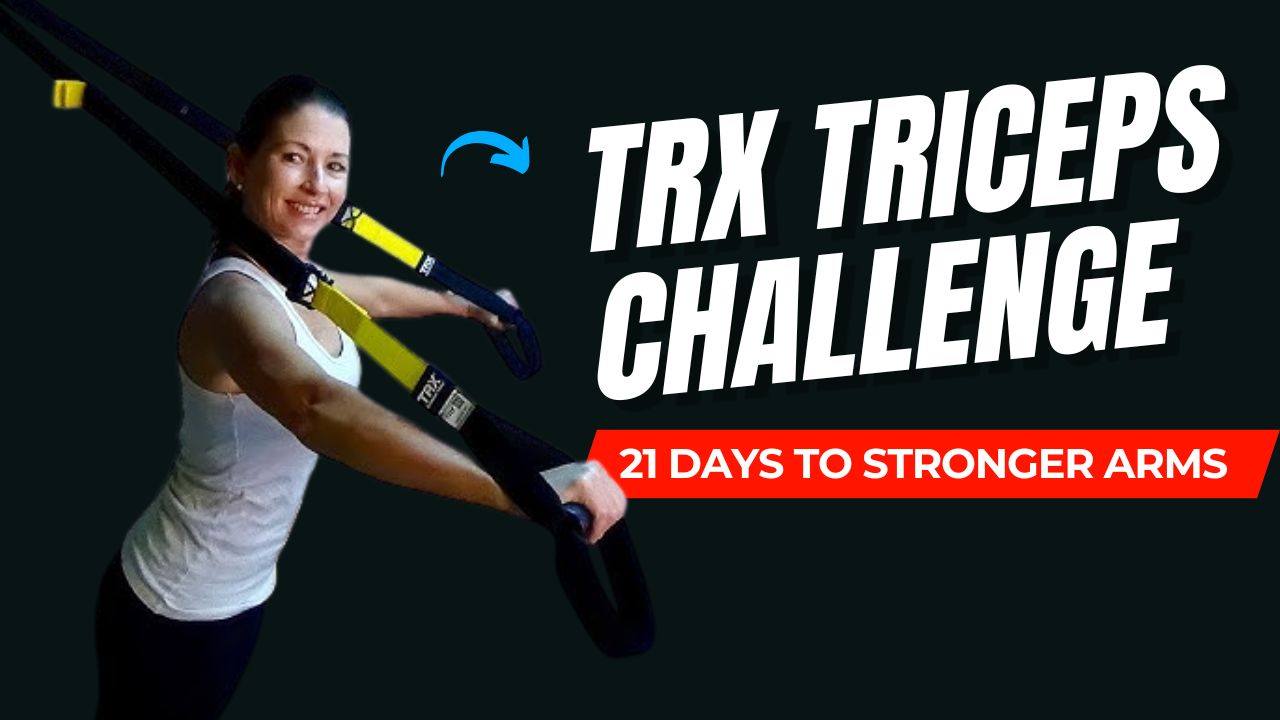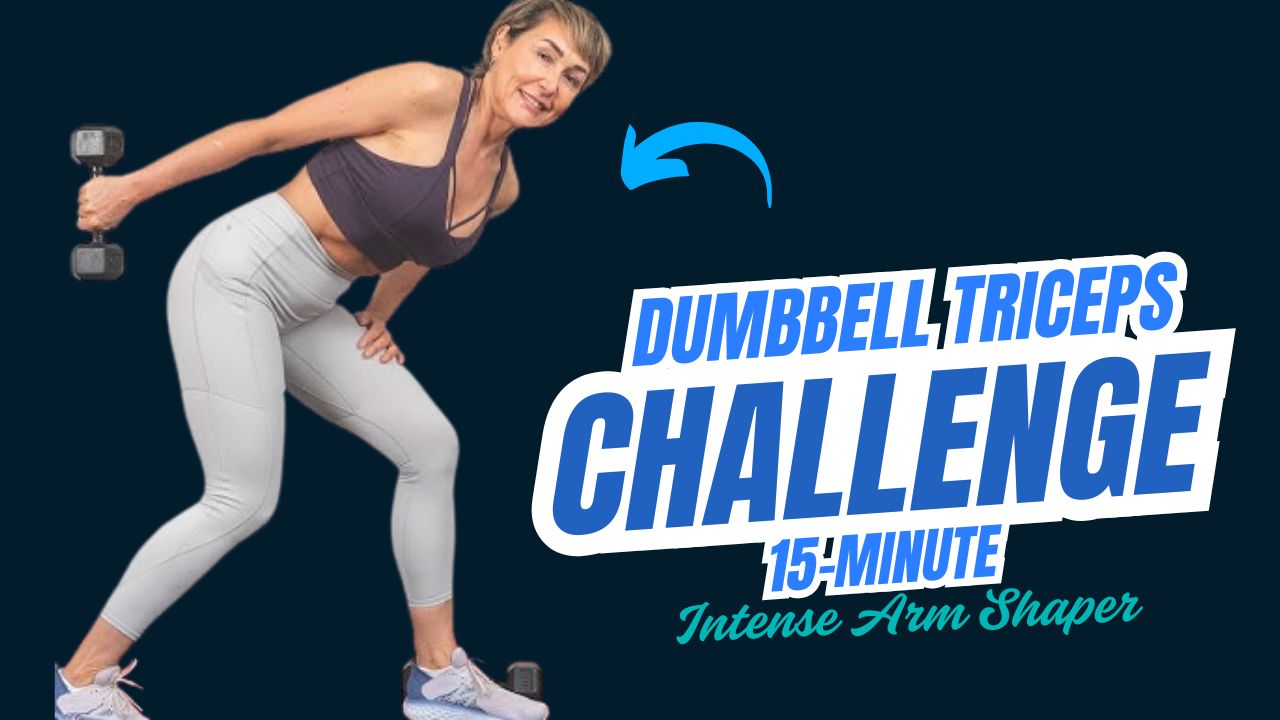When people think of toned arms, the focus often falls on the biceps. But here’s the truth: your triceps make up nearly two-thirds of your upper arm’s muscle mass.
If you want defined, sculpted, and strong arms, training your triceps is non-negotiable. The kettlebell, with its unique design and versatility, offers a powerful way to build lean muscle, enhance endurance, and create definition in this often-overlooked muscle group.
Do you know? Many believe that push-ups alone are enough for toned arms. While push-ups activate the triceps, targeted tricep-specific training with progressive overload is the real secret behind noticeable results.
This 7-day kettlebell triceps challenge is designed to help you build strength, tone, and definition while keeping workouts varied and engaging.
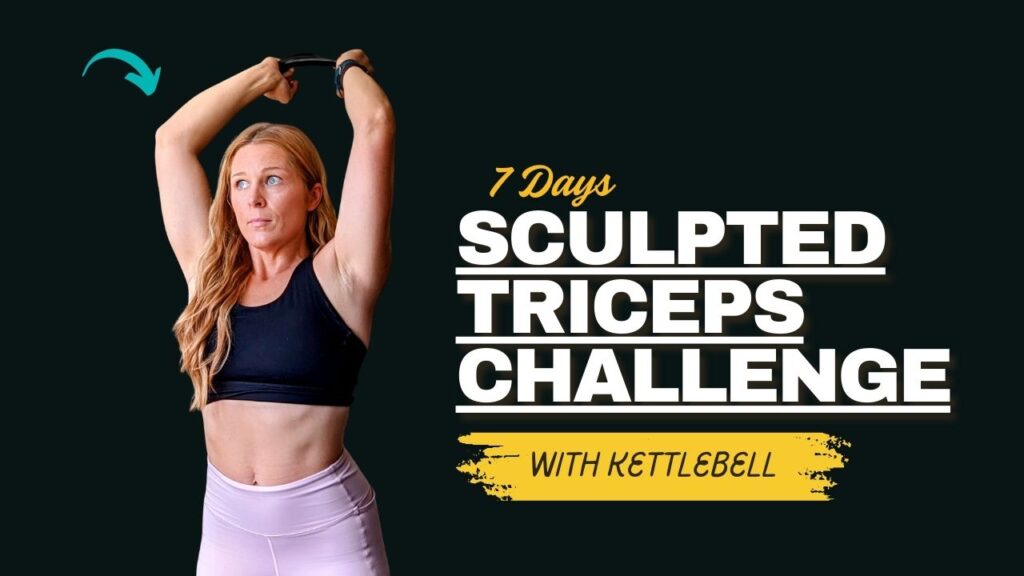
Table of Contents
Understanding the Triceps Muscle
Before diving into the challenge, it’s important to know what you’re working on. The triceps brachii has three heads:
- Long head: Runs along the back of your arm and contributes most to size.
- Lateral head: Gives the triceps their “horseshoe” shape.
- Medial head: Supports endurance and stability.
A well-rounded workout plan must target all three heads, and kettlebell exercises are particularly effective because they demand both stability and power.
What Can Happen After 30 Days of This Triceps Challenge
| Benefits After 30 Days | How It Helps You |
|---|---|
| Noticeable arm definition | Triceps begin to look leaner and more sculpted. |
| Increased triceps strength | Improves pushing power in presses, push-ups, and daily activities. |
| Better muscle endurance | Allows you to perform more reps with less fatigue. |
| Improved joint stability | Strengthens supporting muscles around elbows and shoulders. |
| Greater mind-muscle connection | Enhances ability to isolate and activate triceps effectively. |
| Boosted overall upper-body strength | Helps with chest, shoulders, and compound lifts. |
| Consistency & habit formation | Builds discipline, making fitness a sustainable lifestyle. |
Do’s and Don’ts of the 7-Day Sculpted Triceps Challenge with Kettlebell
| Do’s | Don’ts |
|---|---|
| Warm up for at least 5 minutes before starting to prevent injury. | Don’t skip your warm-up or cool-down stretches. |
| Focus on controlled, slow movements to engage the triceps fully. | Don’t swing the kettlebell or rush through reps. |
| Keep elbows tucked in close during extensions and presses. | Don’t let elbows flare out, as it reduces triceps activation. |
| Start with a manageable kettlebell weight and progress gradually. | Don’t go too heavy too soon—it compromises form and increases injury risk. |
| Maintain proper posture with core engaged throughout exercises. | Don’t arch your back or let hips sag during push-ups and presses. |
| Listen to your body—add rest if you feel sharp pain or extreme fatigue. | Don’t push through pain or ignore signs of overtraining. |
| Pair the challenge with balanced nutrition and hydration. | Don’t rely on exercise alone without supporting it with proper diet. |
The 7 Kettlebell Triceps Exercises
Below are the cornerstone movements for this challenge. Each one is paired with a clear “How to” section and explained for form, benefits, and common mistakes to avoid.
1. Kettlebell Overhead Triceps Extension
Description: This isolation exercise directly targets the long head of the triceps, helping build arm mass and strength.
How to:
- Hold a kettlebell with both hands by the handle.
- Press it overhead until arms are fully extended.
- Slowly lower the kettlebell behind your head by bending your elbows.
- Keep elbows tucked in close to your ears.
- Extend arms back up to the starting position.
Tip: Avoid flaring elbows outward, as it reduces triceps activation.
2. Kettlebell Close-Grip Press
Description: This compound movement mimics a bench press but focuses heavily on the triceps when performed with a narrow grip.
How to:
- Lie on your back with knees bent and feet flat.
- Hold two kettlebells at chest level, palms facing each other.
- Press the kettlebells upward, keeping them close together.
- Lower them back slowly, maintaining control.
Tip: Keep wrists neutral and avoid letting kettlebells drift outward.
3. Kettlebell Floor Skull Crusher
Description: A variation of the classic skull crusher, using kettlebells adds instability, which forces greater engagement of stabilizer muscles.
How to:
- Lie flat on your back with a kettlebell in each hand.
- Extend arms straight up above chest.
- Bend elbows and lower kettlebells toward your forehead.
- Press them back up to the starting position.
Tip: Move only at the elbows; don’t let your shoulders take over.
4. Kettlebell Kickbacks
Description: This is one of the best finishing moves for sculpting and defining the triceps.
How to:
- Hold a kettlebell in one hand and place the opposite knee on a bench.
- Lean forward slightly with a flat back.
- Bend your elbow at 90 degrees and keep upper arm parallel to your torso.
- Extend the kettlebell backward until your arm is straight.
- Slowly return to the start.
Tip: Keep movements slow and controlled for maximum muscle engagement.
5. Kettlebell Diamond Push-Up (Weighted Variation)
Description: A bodyweight favorite enhanced by the kettlebell, this variation adds intensity while heavily activating the triceps.
How to:
- Place two kettlebells on the floor shoulder-width apart.
- Grip the handles and position yourself in a plank with hands forming a diamond shape under your chest.
- Lower your chest between the kettlebells, keeping elbows close to your sides.
- Push back up to the starting plank position.
Tip: Engage your core to prevent hips from sagging.
6. Kettlebell Overhead Press (Triceps-Focused)
Description: While primarily a shoulder exercise, adjusting your form emphasizes the triceps.
How to:
- Hold two kettlebells at shoulder level.
- Press them straight overhead, but stop just before full lockout.
- Focus on using triceps to extend arms rather than driving through shoulders.
- Lower back to shoulder level.
Tip: Keep the movement strict—no jerking or using leg drive.
7. Kettlebell Tate Press
Description: This lesser-known move is excellent for targeting the lateral head of the triceps.
How to:
- Lie flat on a bench or floor with a kettlebell in each hand.
- Start with arms extended above chest, palms facing feet.
- Lower kettlebells toward the chest by bending elbows outward.
- Extend arms back up in a controlled motion.
Tip: Keep the kettlebells steady—don’t let them swing.
Interesting Fact:
Many people believe lifting heavier weights is the only way to grow triceps. However, studies show that time under tension and controlled movement matter more than load for hypertrophy. That’s why kettlebells, with their unbalanced design, create a unique challenge that dumbbells often don’t.
Structuring the 7-Day Triceps Challenge
The challenge uses a mix of volume and recovery. You’ll train daily for 7 days straight, alternating between strength, endurance, and sculpting focus. Each session takes around 20–30 minutes, making it manageable yet effective.
Weekly Duration Breakdown:
- Warm-up: 5 minutes (dynamic stretches, arm circles, light kettlebell swings).
- Workout: 20–25 minutes (main exercises).
- Cool-down: 5 minutes (triceps stretches, overhead reach).
The 7-Day Triceps Challenge Routine
Row Format (Day-by-Day Overview):
- Day 1: Overhead Extensions + Kickbacks (Strength & Isolation)
- Day 2: Close-Grip Press + Overhead Press (Compound Power)
- Day 3: Skull Crushers + Tate Press (Hypertrophy Focus)
- Day 4: Diamond Push-Ups + Kickbacks (Endurance & Definition)
- Day 5: Overhead Extensions + Close-Grip Press (Strength & Size)
- Day 6: Skull Crushers + Overhead Press (Volume & Stability)
- Day 7: Full Circuit of All 7 Exercises (Challenge Day)
Table Format (Reps & Sets):
| Day | Exercises | Sets | Reps | Rest |
|---|---|---|---|---|
| 1 | Overhead Extension, Kickbacks | 4 | 12–15 | 60 sec |
| 2 | Close-Grip Press, Overhead Press | 4 | 10–12 | 75 sec |
| 3 | Skull Crusher, Tate Press | 4 | 12–14 | 60 sec |
| 4 | Diamond Push-Ups, Kickbacks | 3 | 15–20 | 45 sec |
| 5 | Overhead Extension, Close-Grip Press | 4 | 10–12 | 75 sec |
| 6 | Skull Crusher, Overhead Press | 4 | 12 | 60 sec |
| 7 | Full Circuit (All 7 exercises) | 3 | 10 each | 30 sec |
Myths vs Reality: Triceps Training
- Myth: Only heavy weights build triceps.
Reality: Consistent moderate weight with strict form can deliver better growth. - Myth: Triceps get enough work during chest training.
Reality: While chest exercises involve triceps, isolation moves are crucial for balance and definition.
Conclusion: The Power of Consistency
The 7-Day Sculpted Triceps Challenge with Kettlebell is more than just a one-week experiment—it’s a solid foundation for stronger, leaner, and more defined arms.
By combining both isolation and compound movements, you’re activating all three heads of the triceps, ensuring balanced growth and sculpted definition.
In just a week, you’ll notice tighter arms, improved endurance, and better control in pressing movements.
But remember—results don’t come from a single week alone. Consistency is the real secret. Think of this challenge as your kickstart: a way to spark progress, build momentum, and prove to yourself that you can commit.
Challenge Continuation Idea
Once you finish this 7-day challenge, don’t stop here—use it as a stepping stone:
- Week 2–4 (Progressive Phase): Increase kettlebell weight slightly or add 1–2 extra sets per exercise.
- Week 5–6 (Hybrid Training): Mix triceps-focused kettlebell moves with bodyweight classics like dips and resistance band extensions for variety.
- Beyond 6 Weeks (Maintenance & Growth): Incorporate triceps sessions 2–3 times a week within your upper-body routine to continue building size and definition.
With steady progression, this challenge evolves from a short-term goal into a long-term habit. Over time, you won’t just notice stronger arms—you’ll experience greater pushing power, improved stability in other lifts, and an overall leaner physique.
Frequently Asked Questions (FAQs)
Can beginners do the 7-Day Sculpted Triceps Challenge with Kettlebell?
Yes, beginners can start this challenge. Choose a lighter kettlebell (4–6 kg) to learn proper form. Focus on controlled movement rather than rushing through reps.
What kettlebell weight is best for triceps workouts?
For most people, a kettlebell between 6–12 kg (13–26 lbs) works well. Beginners should start lighter, while advanced lifters can gradually progress to heavier weights as form improves.
How long will it take to see visible results?
Initial improvements in strength and muscle activation may be felt within 1–2 weeks. Noticeable arm definition typically appears in 4–6 weeks with consistent training, proper nutrition, and rest.
Do I need to do all seven days without rest?
This challenge is designed for 7 consecutive days, but if your arms feel excessively sore, you can add a rest day. Listen to your body—recovery is key for muscle growth.
Can kettlebell triceps exercises also tone the arms?
Yes. These exercises not only build muscle but also help burn calories. Paired with a healthy diet, they contribute to leaner, more toned arms.
Are kettlebells better than dumbbells for triceps training?
Both are effective. However, kettlebells create a unique unbalanced load that challenges stabilizer muscles and increases time under tension, which can improve results.
How should I warm up before triceps workouts?
A 5-minute warm-up with arm circles, light kettlebell swings, and push-ups helps increase blood flow, reduces injury risk, and prepares muscles for lifting.
Can I combine this challenge with other workouts?
Yes. This triceps challenge can complement your regular routine. For best results, avoid heavy chest or shoulder training on the same day to prevent overtraining the triceps.
What if I don’t have two kettlebells?
You can complete most exercises with just one kettlebell by working one arm at a time. This can also improve balance and unilateral strength.
Is diet important for triceps growth and definition?
Absolutely. Pairing this challenge with a protein-rich diet and balanced nutrition ensures your muscles repair, recover, and grow effectively.





